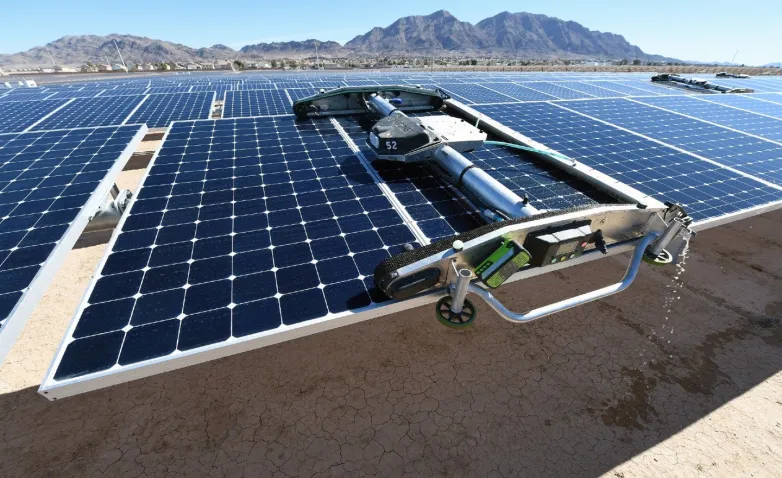Trump administration set to approve the largest solar farm in the U.S.
- A new solar panel farm in Nevada would generate a massive 690 megawatts of renewable energy

The United States Department of the Interior is reportedly close to signing off on approving a plan for the largest solar farm in the U.S.
The farm, which will be located in the Mojave Desert area northeast of Las Vegas and south of the Moapa River Indian Reservation, is part of the Gemini Solar Project. Its mission is to install solar panels that will generate up to 690 megawatts over the 7,100 acres of federal land, which they estimate will create up to 2,000 jobs.
A report in the Los Angeles Times says that the new solar farm would be able to store approximately 380 megawatts of four-hour lithium-ion batteries for power when the sun goes down.
A venture monitored by Solar Partners, XI LLC, the solar farm environmental impact study was released at the end of December 2019, with an extended document surveying the biome of the desert area where Solar Partners plans to develop the farm.
The report addresses impacts to major forms of life in the proposed development area, studying desert flora such as cacti and yucca, and fauna, namely the desert tortoise, kit fox, and burrowing owl.
While stating that the project development will include “restoration techniques” to mitigate any damage to the native plant communities of the location, the report says that there is “potential permanent and temporary impacts to cacti and yucca,” which include “mortality, morbidity, and disturbance to individuals or populations.”
Relocation activities, especially for animal life native to the area, is a solution frequently recommended for flora and fauna native to the development site. Counting only 132 active desert tortoises living in the area, the report advocates total relocation of the tortoise population inhabiting the proposed development site, thus reducing their exposure to human activity and the increased predators that come with it.
Restoration after the project is completed, or reintroduction of native life to the area, is an additional option mentioned in the reports.
If approved, the Gemini Solar project would be the third solar farm approved under the Trump administration, which also include the 500-megawatt Palen Project in California and the 80-megawatt Sweetwater Project in Wyoming.
This achievement comes as a contrast to Trump’s other environmental agendas, including promoting coal exports and opening the Alaska National Wildlife Refuge for energy company drilling and development.
Tim Smith, the Land Manager for the Southern Nevada District of the Bureau of Land Management, stated in a press release that “The proposed Gemini Solar Project would represent a significant increase in renewable energy capacity for Nevada and the West.”
Despite the option for affordable and renewable energy, the aforementioned environmental concerns have earned protests from nonprofit groups, such as Defender of Wildlife and the Sierra Club.
In a December desert summary report, the Sierra Club outlined the permanent changes in temperature and sun exposure the solar farm will bring to native plants in the region. The organization also raised concerns over the desert tortoise wellbeing despite relocation, plant restoration, and recolonization efforts proposed by Solar Partners.
Dr. Brian Todd, affiliated with the Sierra Club was recorded saying that the simply relocating the desert tortoise population to a new area and allowing them to return with less vegetation surrounding them will not necessarily protect the species population.
Karimah Schoenhut, also of the Sierra Club, stated that “Impacts to tortoises in this area are particularly worrisome given that the Northeastern Mojave recovery unit is the only recovery unit out of five where trends in desert tortoise abundance have not been falling, and instead appear to have been increasing over the past 15 years.”
Also read

